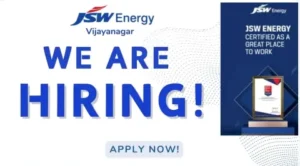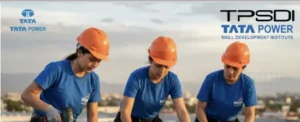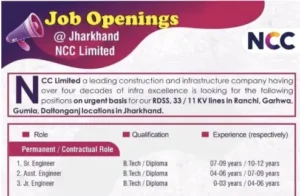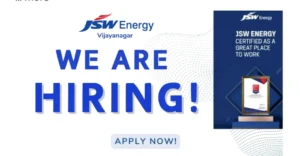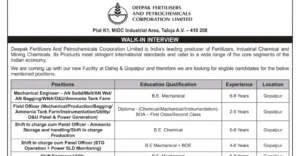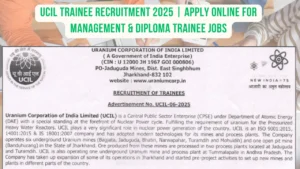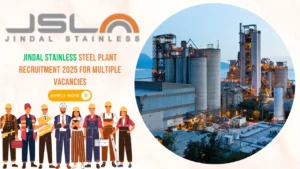Indian Polity MCQs | Indian Polity | Top Indian
Polity MCQs with Answer Quiz |
Indian Polity MCQ type Questions with answer
1. Which part of the Indian constitution mentions the Comptroller and Auditor General of India:
A) 148
B) 156
C) 280
D) 352
Answer: (A)
2. According to the preamble of the Indian constitution, the ultimate power lies in the hands of __________:
A) Parliament
B) President
C) Constituent Assembly
D) People
Answer: (D)
3. Which among the following is responsible for amending the law relating to Indian citizenship:
A) Prime Minister
B) President
C) Parliament
D) Supreme Court
Answer: (C)
4. Rajyasabha was established on _________:
A) 1 January 1948
B) 10 January 1950
C) 3 April 1952
D) 3 July 1956
Answer: (C)
5. Which of the following committee recommended the establishment of the Panchayati Raj System:
A) Kiran Silva Committee
B) Khattar Committee
C) Balwant Rai Mehta Committee
D) None of These
Answer: (C)
6. Who among the following acts as the medium of communication between the President and the council of ministers:
A) Speaker of Loksabha
B) Chairman of Rajyasabha
C) Vice President
D) Prime Minister
Answer: (D)
7. Which of the following state doesn’t follow Panchayati Raj System:
A) Rajasthan
B) Assam
C) Tripura
D) Mizoram
Answer: (D)
8. Which among the following body is considered the guardian of Fundamental rights:
A) Judiciary
B) Parliament
C) Ruling Party
D) Both A & B
Answer: (A)
9. The legislative assembly of Delhi can only make laws on _________:
A) Land
B) Police
C) Public
D) None of These
Answer: (C)
10.Who among the following takes an oath to uphold the constitution and laws simultaneously:
A) Chief Justice of India
B) President
C) Prime Minister
D) State Governor
Answer: (A)
11. Which high court has the maximum number of benches:
A) Allahabad High Court
B) Mumbai High Court
C) Guwahati High Court
D) Patna High Court
Answer: (C)
12. Which of the following fundamental right protects “Forced labor and children working under 14 years”
A) Right to Equality
B) Right to Freedom
C) Right to Exploitation
D) Right to Religion
Answer: (C)
13. Which of the following article can not be suspended in any order in case of emergency:
A) Article 15 & 20
B) Article 17
C) Article 32
D) Article 20 & 21
Answer: (D)
14. Which among the following body conducts the state assembly election:
A) State Election Commission
B) Election Commission of India
C) Presidential Election
D) None of These
Answer: (B)
15. Sikkim was made an integral part of India under _________ amendment:
A) 28th
B) 36th
C) 38th
D) None of These
Answer: (B)
16. Which of the following country accepted the policy of Dual Citizen:
A) French
B) India
C) China
D) U.S.A
Answer: (D)
17. The pages of the Indian constitution were decorated by:
A) Rammanohar Sinha
B) Nandlal Bose
C) B.R. Ambedkar
D) Both A & B
Answer: (D)
18. Who among the following can participate in parliament session without any membership:
A) President of India
B) Chief Justice of India
C) Attorney General of India
D) CAG
Answer: (C)
19. ____________ controls the maximum number of states:
A) Chennai High Court
B) Kolkata High Court
C) Delhi High Court
D) Mumbai High Court
Answer: (D)
20. Chief ministers of states are members of:
A) Niti Aayog
B) Finance Commission
C) National Development Council
D) Election Commission
Answer: (C)
21. Which among the following personality suggested the idea of a preface in the Indian constitution:
A) Mahatma Gandhi
B) Lord Mountbatten
C) B.R. Ambedkar
D) Jawaharlal Nehru
Answer: (D)
22. In which year the constitutional assembly approved the design of our national flag:
A) 1946
B) 1947
C) 1948
D) 1949
Answer: (B)
23. In which years election the Indian National Congress lost its majority in the parliament for the first time:
A) 1975
B) 1976
C) 1977
D) 1978
Answer: (C)
24. Which high court has the maximum number of judges:
A) Allahabad High Court
B) Patna High Court
C) Delhi High Court
D) None of These
Answer: (A)
25. The Loksabha speaker submits his resignation to _________:
A) President
B) Deputy Speaker
C) Vice President
D) All of These
Answer: (B)
26. In which language the constitution of India was mainly written:
A) Hindi
B) English
C) Both A & B
D) Urdu
Answer: (C)
27. On which basis does the Indian constitution recognizes the ratio of minorities:
A) Caste Basis
B) Religion Basis
C) Population Basis
D) None of These
Answer: (C)
28. According to _________, the President has the right to take advice from the supreme court:
A) Article 72
B) Article 120
C) Article 143
D) Article 171
Answer: (C)
29. There is a total of ________ pages in the constitution of India:
A) 178
B) 210
C) 216
D) 232
Answer: (D)
30. What is the retirement age of a governor of a state:
A) 60 Years
B) 62 Years
C) 65 Years
D) Not Specified
Answer: (D)
31. Karnataka achieved unification in the year ____________:
A) 1956
B) 1957
C) 1858
D) 1960
Answer: (A)
32. State P.S.C. submits its report to the _________:
A) President
B) Governor
C) Legislative Assembly
D) None of These
Answer: (B)
33. Which of the following article is associated with budget:
A) Article 110
B) Article 112
C) Article 117
D) Article 315
Answer: (B)
34. Who among the following has military power:
A) Prime Minister
B) Chief Justice of India
C) Admiral
D) President
Answer: (D)
35. ____________ is the chairman of NITI AYOG:
A) President
B) Vice President
C) Prime Minister
D) None of These
Answer: (C)
36. Who was the constitutional advisor to the constituent assembly in India:
A) Dr. Rajendra Prasad
B) Dr. B.R. Ambedkar
C) B.N. Rao
D) None of These
Answer: (C)
37. In the absence of the Chief Justice of India, who appoints the President:
A) Chief Justice of the High Court
B) Attorney General of India
C) Prime Minister
D) None of These
Answer: (D)
38. There are total _________ words in the Indian constitution:
A) 117369
B) 126500
C) 153428
D) 200005
Answer: (A)
39. ____________ is the assistant of the Attorney General of India:
A) Advocate General
B) Chief Justice of India
C) Solicitor General of India
D) None of These
Answer: (C)
40. What is the retirement age of the Chief of Defence Staff (C.D.S.):
A) 55 Years
B) 62 Years
C) 65 Years
D) 70 Years
Answer: (C)
41. Do union territories send their representatives to Rajyasabha:
A) Yes
B) No
C) Sometimes
D) Every 3 Years
Answer: (A)
42. The speaker’s vote in Loksabha is called:
A) Central Vote
B) Special Vote
C) Casting Vote
D) Separate Vote
Answer: (C)
43. Under which article of the Indian constitution, special provisions have been mentioned above, the state of Mizoram:
A) Article 371G
B) Article 371E
C) Article 371F
D) Article 371D
Answer: (A)
44. The relation of the center-state lies in which one of the following schedules:
A) 6th
B) 7th
C) 8th
D) 9th
Answer: (B)
45. Who among the following opposed the introduction of the words “socialist” and “secular” in the preamble:
A) MK Gandhi
B) K.T. Shah
C) B.R. Ambedkar
D) All of These
Answer: (C)
46. Who decides the dispute regarding the election of vice president in India:
A) Election Commission
B) Supreme Court
C) Loksabha Speaker
D) President
Answer: (B)
47. On 2 October 1959, the Panchayat Raj system was introduced in India at the following places:
A) Nagore Rajasthan
B) Sitamarhi Bihar
C) Aligarh Uttar Pradesh
D) Pune Maharashtra
Answer: (A)
48. Which among the following bodies is neither constitutional nor statutory in nature:
A) Finance Commission
B) Central Bureau of Investigation
C) National Green Tribunal
D) Union Public Service Commission
Answer: (B)
49. Which article of the Indian constitution contains the provisions regarding the election commission:
A) Article 320
B) Article 324
C) Article 328
D) Article 330
Answer: (B)
50.Which of the following ministries is associated with the Central Bureau of Investigation:
A) Ministry of Law
B) Ministry of Home Affairs
C) Ministry of Personnel
D) None of These
Answer: (C)
51. According to the article ___________, state council can be formed or abolished:
A) 167
B) 168
C) 169
D) 170
Answer: (C)
52. In India legal sovereignty is vested with:
A) The President
B) The Judiciary
C) The Parliament
D) The Constitution
Answer: (D)
53. Which of the following has the power to adjudicate disputes between the Centre and states:
A) High Court
B) Supreme Court
C) President
D) CAG
Answer: (B)
54. The fifth health minister of independent India was:
A) Maulana Abdul Kalam Azad
B) Sardar Vallabhbhai Patel
C) Vijayalaxmi Pandit
D) Rajkumari Amrit Kaur
Answer: (D)
55. The first speaker of the Loksabha was:
A) S. Radhakrishnan
B) Sadar Hukum Singh
C) G.V. Mavlanker
D) None of These
Answer: (C)
56. A presidential ordinance can remain in force for ______ months:
A) Three
B) Six
C) Nine
D) Eleven
Answer: (B)
57. The first idea to have a constitution was given by:
A) M.N. Roy
B) Jawaharlal Nehru
C) Sardar Patel
D) Mahatma Gandhi
Answer: (A)
58. Who among the following is the visitor to all the central universities of India:
A) President of India.
B) Chairman U.G.C
C) Vice President of India
D) None of These
Answer: (B)
59. What is the tenure of a panchayat as per the 73rd constitutional amendment act:
A) 2 Years
B) 3 Years
C) 5 Years
D) 6 Years
Answer: (C)
60. Which of the following committee accepted the reorganization of states based on “one language, one state.”
A) S.K Dhar Committee
B) J.V.P. Committee
C) Fazl Ali Commission
D) None of These
Answer: (D)
61. Who among the following never become the vice president of India:
A) Gulzarilal Nanda
B) V.V. Giri
C) Zakir Hussain
D) All of These
Answer: (A)
62. Former Indian president Pranab Mukherjee won the first Loksabha election in the year:
A) 1991
B) 1998
C) 2004
D) 2007
Answer: (C)
63. Subordinates courts are supervised by ________:
A) Supreme Court
B) District Court
C) High Court
D) Parliament
Answer: (C)
64. _______________ of the Indian constitution deals with center-state relations:
A) Part IV
B) Part X
C) Part XI
D) Part XII
Answer: (C)
65. Which article of the Indian constitution talks about the provisions for the impeachment of the President of India:
A) Article 51
B) Article 54
C) Article 61
D) Article 63
Answer: (C)
66. Matters, which are not points of order, can be raised by way of special mentions under rule ________ of Loksabha:
A) 214
B) 223
C) 302
D) 377
Answer: (D)
67. The 73rd Amendment Act came into force from:
A) January 1980
B) April 1991
C) April 1993
D) August 1995
Answer: (C)
68. Who among the following is not included in the committee for the appointment of the chairperson of the NHRC:
A) P.M.
B) President
C) Chief Justice
D) All of These
Answer: (C)
69. The estimate committee consist which of the following:
A) 30 Members of Loksabha
B) 30 Members of Rajyasabha
C) 30 Members from Both
D) None of These
Answer: (A)
70. The council of ministers doesn’t include ________:
A) Cabinet Ministers
B) Ministers of States
C) Cabinet Secretary
D) Ministers without Portfolio
Answer: (C)
71. Rajyasabha enjoys more power than Loksabha in the case of which one of the following:
A) Money Bills
B) General Bills
C) Setting up New All India Services
D) Amendment of the Constitution
Answer: (C)
72. In Indian polity, which among the following is supreme:
A) President
B) Prime Minister
C) Constitution
D) All of These
Answer: (C)
73. No confidence motion, to be admitted in the Loksabha, needs the support of _________ members:
A) 30
B) 50
C) 60
D) 70
Answer: (B)
74. To which one of the following does the Central Vigilance Commission have to present an annual report on its performance:
A) President
B) State Governor
C) Loksabha
D) None of These
Answer: (A)
75. The definition of “Money Bill” is given in Article _________ of the Indian constitution:
A) 109
B) 110
C) 111
D) 112
Answer: (B)
76. Article _________ of the Indian constitution defines the duties of the Chief Minister:
A) 167
B) 168
C) 169
D) 170
Answer: (A)
77. According to article 75(C) of the Indian constitution, the council of ministers is collectively responsible for:
A) Prime Minister
B) Parliament
C) Vice President
D) All of These
Answer: (B)
78. “Cabinet system” and “Collective responsibility” are the contributions of:
A) U.S.A
B) India
C) Britain
D) France
Answer: (C)
79. The separation of the judiciary from the executive has been provided in _______ of the constitution:
A) Article 47
B) Article 48
C) Article 49
D) Article 50
Answer: (D)
80. Which of the following Article of the Indian constitution empowers the Governor to issue ordinances during recesses of the state legislature:
A) Article 210
B) Article 211
C) Article 212
D) Article 213
Answer: (D)
81. According to the Article _____, the Governor has ultimate executive power over the State:
A) 151
B) 152
C) 153
D) 154
Answer: (D)
82. How many Indian Prime Minister died while in office:
A) One
B) Two
C) Three
D) Four
Answer: (C)
83. The total number of ministers, including the Prime Minister, shall not exceed _______ members of the Loksabha:
A) 14%
B) 15%
C) 16%
D) 17%
Answer: (B)
84. The constitution of India is divided into _______ chapters:
A) 21
B) 22
C) 23
D) 24
Answer: (B)
85. After how many days of absence from parliament without prior permission can an MP be disqualified:
A) 30 Days
B) 40 Days
C) 50 Days
D) 60 Days
Answer: (D)
86. The provision for the constitution of legislatures in states is enriched in article ________ of the constitution:
A) 168
B) 169
C) 170
D) 171
Answer: (A)
87. Who appoints the ad hoc committee on parliament:
A) Speaker of Loksabha
B) Chairman of Rajyasabha
C) Prime Minister
D) Both A & B
Answer: (D)
88. The stability of government is assured in the:
A) Parliamentary Form
B) Presidential Form
C) Plural Executive System
D) Direction Democracy
Answer: (B)
89. Supreme court is the guardian for:
A) Center-state Disputes
B) Preamble
C) Fundamental Rights
D) Directive Principles
Answer: (C)
90. The organs of the Indian parliament are:
A) President, Loksabha & Rajyasabha
B) Loksabha & Rajyasabha
C) Speaker, Prime Minister & Loksabha
D) None of These
Answer: (A)
91. In which fund all the revenue, debt recovery received by the union government goes:
A) Consolidated Fund
B) Contingency Fund
C) Both A & B
D) None of These
Answer: (A)
92. Which of the following article of the Indian constitution provides the President the authority to dissolve the Loksabha:
A) Article 82
B) Article 84
C) Article 85
D) Article 90
Answer: (C)
93. Right to privacy comes under article ___________:
A) 18
B) 19
C) 20
D) 21
Answer: (D)
94. Article ________ & _______ can’t be null during a national emergency:
A) 14, 18
B) 19, 21
C) 20, 21
D) 29, 30
Answer: (C)
95. Which of the following section of the IPC is related to LGBC:
A) 370
B) 376
C) 377
D) None of These
Answer: (C)
96. There are provisions in the constitution of India to ensure the independence of ___________:
A) Parliament
B) Judiciary
C) Citizens
D) None of These
Answer: (B)
97. Town planning comes under part _________ of the Indian constitution:
A) VII
B) VIII
C) IX
D) IX-A
Answer: (D)
98. A Gram Panchayat is divided into several smaller areas. What is this area called:
A) Village
B) Town
C) Ward
D) None of These
Answer: (C)
99. Under which article every Indian citizen is given the right to health:
A) 19
B) 20
C) 21
D) 21-A
Answer: (C)
100. Prakash Singh’s judgement is related to:
A) Police Encounter
B) Police Reforms
C) Harassment of Women at Work
D) Economic Policy
Answer: (B)
101. Which of the following matters can be raised by way of special mention under the rule of the Loksabha:
A) 214
B) 223
C) 302
D) 377
Answer: (D)
102. Find out the correctly matched pair related to Governor:
A) Financial Power, Article 202
B) Grant Pardon, Article 161
C) Discretionary Power, Article 163
D) All of These
Answer: (D)
103. According to article _________, forced labor is prohibited in India:
A) 21
B) 22
C) 23
D) 24
Answer: (C)
104. Which of the following term implies reducing the period of a sentence without changing its character:
A) Respite
B) Commute
C) Pardon
D) Remission
Answer: (D)
105. Which of the following British act established the Public Service Commission:
A) Government of India Act 1919
B) Government of India Act 1935
C) Indian Council Act 1909
D) None of These
Answer: (A)
106. Article 19 of the Indian constitution provides:
A) 6 Freedom
B) 7 Freedom
C) 8 Freedom
D) 9 Freedom
Answer: (A)
107. Presently, how many states in India have a bicameral legislature:
A) 6
B) 7
C) 8
D) 9
Answer: (B)
108. The salaries and allowances of the Supreme Court judges are drawn out of:
A) Contingency Fund
B) Public Accounts of India
C) Consolidated Fund
D) Salary Fund
Answer: (C)
109. In which year the Election Commission issued the model code of conduct for the first time:
A) 1971
B) 1975
C) 1980
D) 1985
Answer: (A)
110. The system of judicial review originated in:
A) India
B) Japan
C) Germany
D) U.S.A.
Answer: (D)
111. President nominates ________ members to Loksabha and _______ members to Rajyasabha:
A) 2, 12
B) 12, 2
C) 2, 2
D) 12, 12
Answer: (B)
112. The date of election of the speaker is specified by:
A) President
B) Deputy Speaker
C) Election Commission
D) None of These
Answer: (A)
113. Who among the following was a member of the Fazl Ali Commission:
A) H.N. Kunzru
B) K.M. Munshi
C) Rajkumari Amrit Kaur
D) K.T. Shah
Answer: (A)
114. On _________, the landmark judgement was given by the Supreme Court of India decriminalizing homosexuality:
A) 6th September 2018
B) 6th September 2019
C) 6th September 2020
D) 6th September 2021
Answer: (A)
115. Which of the following features distinguish Rajya Sabha from Vidhana Parishad:
A) Indirect Election
B) Nomination of Members
C) Power of Impeachment
D) Tenure of Membership
Answer: (C)
116. The maximum period prescribed for the state emergency is ________ and for financial emergency is _______:
A) 3 Years, Not Defined
B) Not Defined, 3 Years
C) 1 Year, Not Defined
D) 2 Years, Not Defined
Answer: (A)
117. Which of the following is called a living document:
A) Constitution
B) Preamble
C) Parliamentary Proceedings
D) None of These
Answer: (A)
118. The abolition of the I.A.S. and I.P.S. was recommended by the:
A) Kher Commission
B) Kalekar Commission
C) Dhebar Commission
D) Rajamannar Commission
Answer: (D)
119. Which act extended the provision of separate electorates to Sikhs and Indian Christians:
A) Government of India Act, 1919
B) Charter Act, 1853
C) Pitts India Act
D) None of These
Answer: (A)
120. Some devices of the parliamentary proceedings of the Indian constitution were inspired by:
A) Indian Council Act, 1909
B) Charter Act, 1833
C) Charter Act, 1853
D) Pitts India Act
Answer: (A)
121. Who was the first speaker of the Loksabha of independent India:
A) Hukam Singh
B) Bali Ram Bhagat
C) Rabi Ray
D) G.V. Mavalanker
Answer: (D)
122. Which act introduced the system of separate electorates:
A) Indian Council Act, 1909
B) Morley Minto Reforms
C) Both A & B
D) None of These
Answer: (C)
123. Which of the following acts was responsible for the demarcation of legislative and executive functions:
A) Charter Act, 1853
B) Charter Act, 1833
C) Pitts India Act
D) Regulating Act, 1773
Answer: (A)
124. Cabinet Committee is:
A) A Constitutional Body
B) An Extra Constitutional Body
C) A Judicial Body
D) A Quasi Judicial Body
Answer: (B)
125. Which type of audit can not be conducted by the Comptroller and Auditor General:
A) Legal & Regulatory Audit
B) Proprietary Audit
C) Both A & B
D) None of These
Answer: (D)
126. The headquarters of the Commissioners for Linguistic Minorities are situated in:
A) Uttar Pradesh
B) Assam
C) Rajasthan
D) Kolkata
Answer: (A)
127. Which of the following is not a multi-member constitutional body:
A) National Commission for SC and ST
B) National Commission for Women
C) Both A & B
D) None of These
Answer: (B)
128. The “Universal Adult Suffrage” is enriched in article _________ of the constitution:
A) 324
B) 325
C) 326
D) 327
Answer: (C)
129. Which of the following constituencies is the largest Loksabha constituency by region:
A) Arunachal West
B) Kutch
C) Ladakh
D) Barmar
Answer: (C)
130. Which of the following acts attempted to introduce a system of open competition in civil services:
A) Charter Act 1853
B) Charter Act 1833
C) Regulating Act 1773
D) None of These
Answer: (B)


